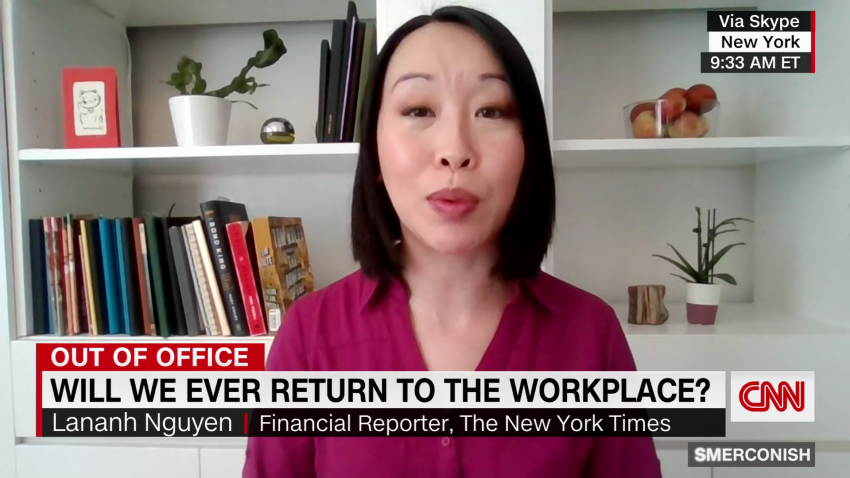Before the pandemic, many corporate leaders believed that allowing their employees to work from home would hurt productivity. But, in many cases, the pandemic proved otherwise.
“Productivity [did not suffer] despite many companies going fully remote. Many thrived through that process and continue to hire at record pace,” said Ben Wigert, director of research and strategy for workplace management at Gallup.
Corporate profits, for instance, steadily rose from the second quarter of 2020 through the end of 2021, according to the Bureau of Economic Analysis. The BEA metric takes into account both revenue growth, reflecting productivity, and cost management, reflecting worker efficiency, Wigert noted.
What’s more, when managers were surveyed during the pandemic, “on average, [they] gave a higher performance review score to their remote employees compared to their in-office employees,” said Brian Kropp, chief of research in consulting firm Gartner’s Human Resources Practice.
Still, many employers now want workers to return to the office for at least three days a week. Their rationale? The need to strengthen workplace culture, and foster greater collaboration and innovation.
While those goals are critical, issuing a mandate that employees work more days in the office than they would like doesn’t ensure success in either arena and could cause some workers to leave, according to workplace experts.
The state of play
Several surveys show that both corporate leaders and workers see true value in returning to the workplace. Humans are social, visceral beings, who often glean more about a situation and build more trust with colleagues in face-to-face exchanges than in virtual ones. And being available in person is essential to mentoring the youngest and newest employees.
At the same time, there is also a new acceptance that workers now want flexibility and the option to continue working remotely. In this regard, the question for workers and leaders now is, “When is that extra level of connection [from in-person work] worth the commute, the time, the cost and the angst?,” said Kate Lister, president of Global Workplace Analytics.
Currently, there’s a disconnect between how often employees want to work remotely and how often their companies will let them, according to the latest monthly Survey of Working Arrangements and Attitudes (SWAA is run by researchers Jose Maria Barrer of the Instituto Tecnologico Autonomo de Mexico, Nicholas Bloom of Stanford University, Steven J. Davis of the University of Chicago and Jinhua Zhao of the MIT Mobility Initiative).
Their data show a majority of organizations (56.1%) are currently offering fewer than three days of remote work a week: 29.7% aren’t offering any; 10.3% are offering one day; and 16% are offering two.
But a majority of employees (also 56.1%) say they want to work remotely for three or more days: 15.6% prefer three; 9.3% prefer four; and 31.2% want to be remote all five days.
Workplace experts warn that employers may risk losing more workers if they mandate too many days in the office.
When people are asked to work on site full-time but would prefer to work hybrid or fully remote, for example, Gallup’s research found that “employees experience significantly lower engagement, significantly lower well-being, significantly higher intent to leave [and] significantly higher levels of burnout.”
Do we need a ‘minimum-days’ mandate?
At the risk of causing exhausted leaders to run screaming from the building, there is an argument to be made that mandating any number of days in the office could work against companies seeking to strengthen culture and innovation.
Culture is about people and behaviors, not place, Lister said. So it behooves companies first to be clear what they want their culture to be and then be more intentional about the ways they cultivate it.
As for innovation, in-person work is essential, but so is alone time.
The Gensler Research Institute found that even before the pandemic, employees at the most innovative companies only worked in the office about three days a week.
“Innovators who spent some time working away from the office reported higher job satisfaction, more meaning, and better managerial relationships. For innovators, the office is just one of the many places where work happens,” researchers wrote.
What the split should be in any given week depends on the task at hand and how an individual and team work best on that task, Janet Pogue McLaurin, the global director of workplace research at Gensler, suggested. “Days of the week [every week] may be the wrong way to think about it.”
For some team members, it may make sense some weeks to do all their work remotely, and for others, it may make sense to be in the office all five days, or to just come in a few days or even half days.
U.K.-based organizational psychologist Craig Knight, who works with employers to maximize well-being, engagement and productivity, concurs that an arbitrary, top-down mandate isn’t ideal.
“The best solutions we’ve always found is when you refer to the experts doing the jobs. And that’s not the [leader],” Knight said.
He advises employers to first consult with employees on what their teams’ and the company’s overall goals should be, which could include an understanding that people should be in the office for some time every week.
“Set the parameters,” he said.
But then leave it to individual teams to negotiate amongst themselves what schedules work best for them to achieve those commonly agreed-upon goals.
“Trust them to arrive at a workable solution, and results are almost always superb.”

























